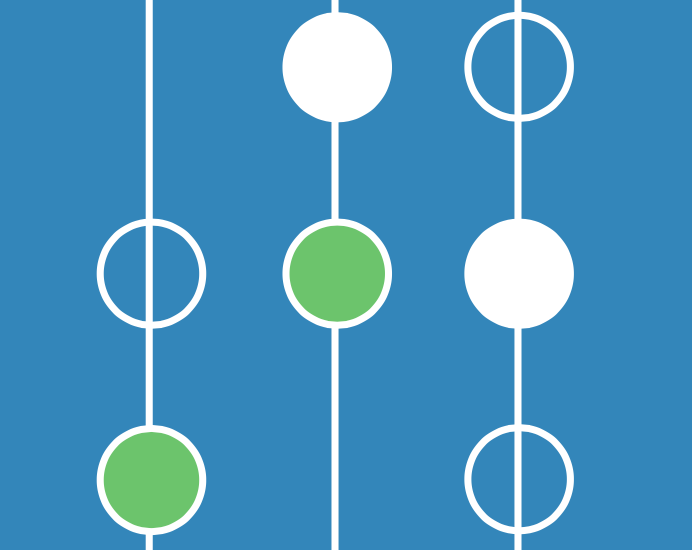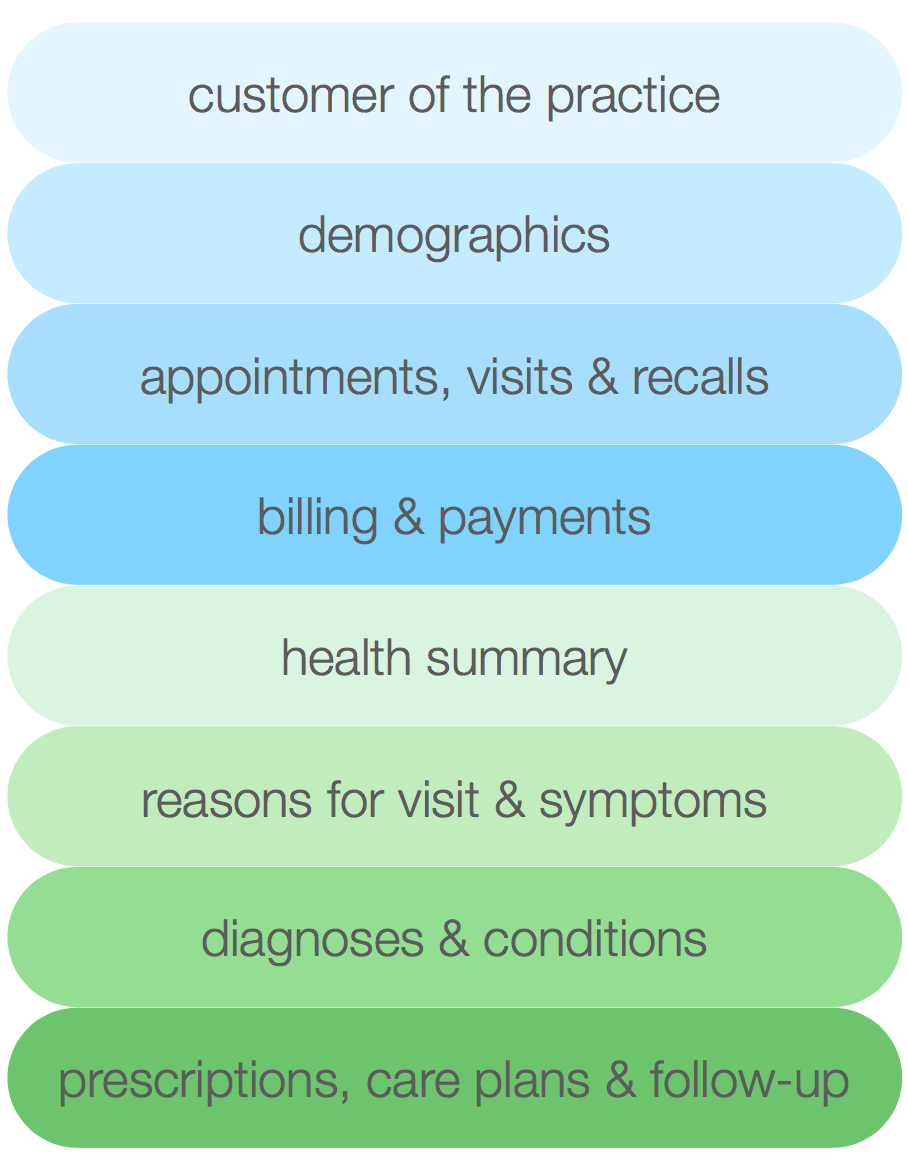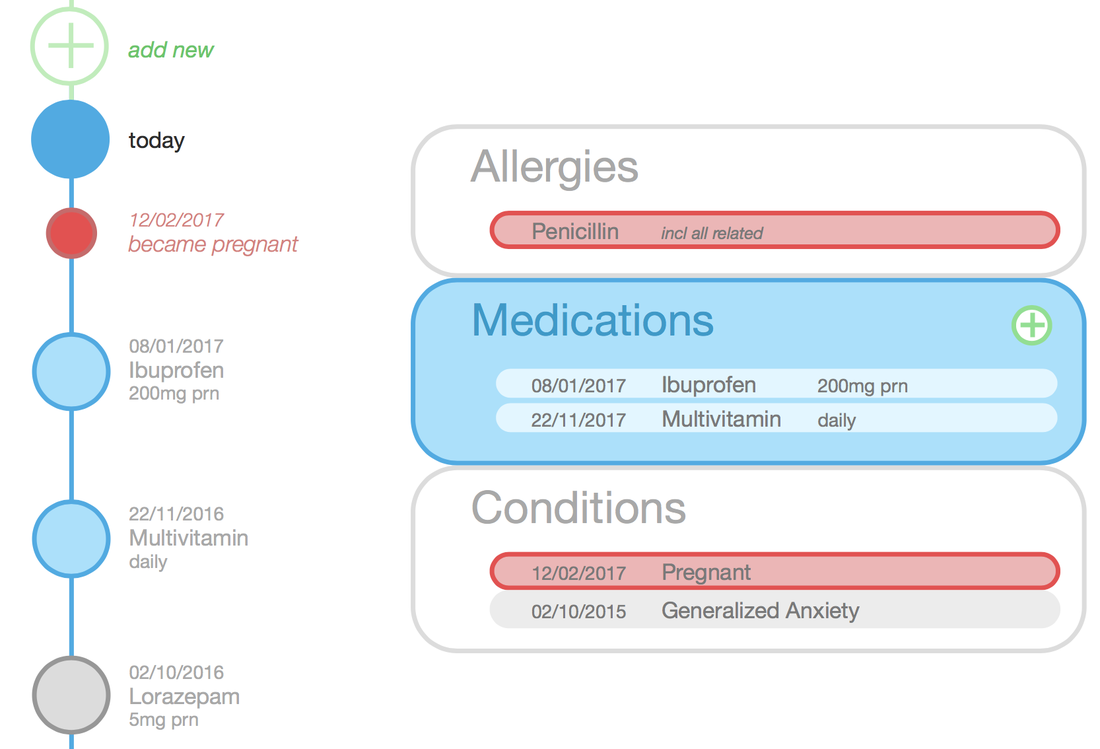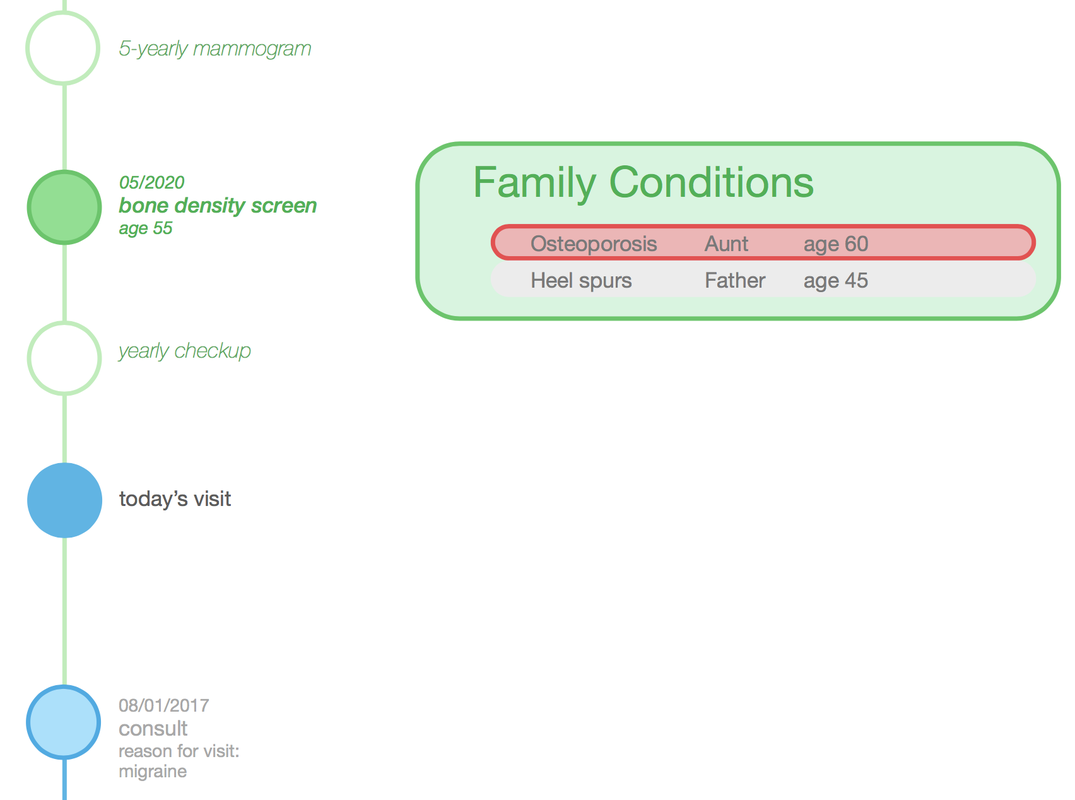|
Designed: 2017
Company: Medical Director Product: Helix Customer Audience:
|
"We see a lot of people. I need to know who this one is, and what's significant about their health concern"
|
|
I started by slicing the patient experience into components that define their identity, to the practice.
A single data point can tell us about an event in that patient's story— perhaps they came in for a routine flu shot. Following along a slice can tell us how that patient is trending— is their hypertension improving or getting worse? By looking at the history of changes across one or more slices, we can start to tell a story about the patient's situation, and establish which factors might be contributing to one another. |
|
With options to manipulate data along multiple axes, we can focus our view down to explore a patient's history of a single element.
Does the patient have a history of this condition? Have they been prescribed this medication in the past? How often do they come in? If the system is taught which elements are relevant to one another, it could also learn to call out links smartly, when appropriate. This could surface potential interactions, or help sniff out the root cause of an ailment. |
|
By charting a patient's past, a path is created to also chart anticipated events, enabling preventative care and wellness planning to occur naturally, and comprehensively.
|




